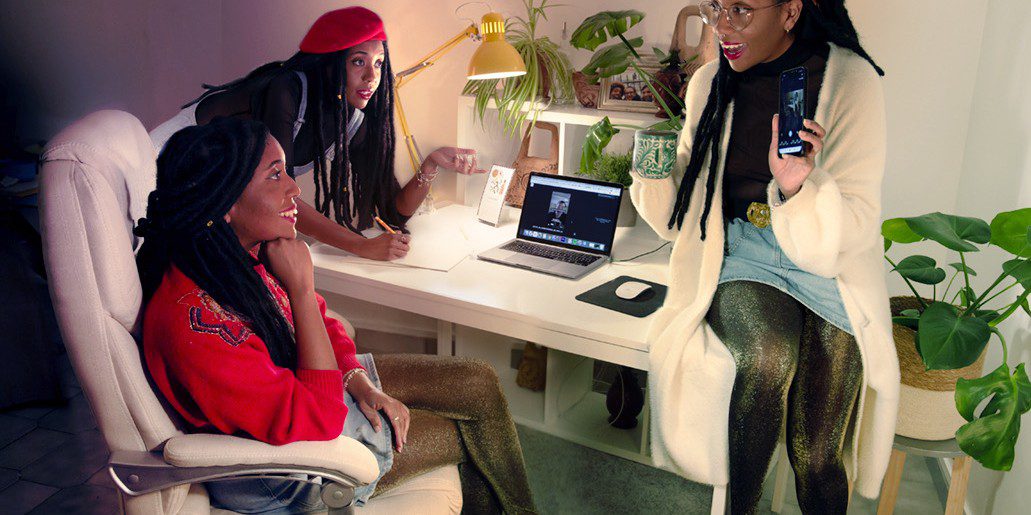How to build cultural relevance for your brand and customers in the next normal?
Jane Fonda, Woody Allen, John Wayne, Andy Warhol, Liza Minnelli may not mean much to Gen Z’ers and Millennials today. And yet their cultural relevance 50 years ago was decade-defining.
The ’70s was known for its debauchery, free expression, mass protests, musical hedonism – as well as its interruption and disillusion. Much like the ‘twenty-twenties’ decade that we’re in today, it represented a period of global change.

However, today, cultural change matters much more, because our primary audience – Millennials and Gen Z – are deeply embedded in it; even creating and influencing it every day from their iPhones and their bedrooms.
Cultural relevance is especially important after this past year. Now that we’ll work upward of 90,000 hours in our lifetime, our work culture is a matter of great consideration. The culture that brands emanate is more important than ever, too. We want them to show us that they care about the world around them, about the movements that are shaping people’s lives (like Black Lives Matter) – not that they’re here to sell products.
In fact, being part of culture is part of a brand’s survival. There’s nothing worse than being culturally irrelevant, in fact. Being irrelevant will distance brands from their customers as well as their staff. This is especially important as we approach the Next Normal.
Building cultural relevance for the Next Normal
The world will be forever changed after the upheaval of the past year. To stay on top, brands need to build relevance for both employees and customers in a post-pandemic.
The key here is to start with gaining the trust of staff, then let that emanate outwards to customers. It’s important to recognize what employees have been through in the past year. (Upheaval, trauma, loss, and stress have been the norm, not the exception.) Moving forward with understanding and prioritizing wellness is essential, especially if brands need to bring employees back into the office on a more permanent basis.
What do brands really need to offer staff now? Is a crucial question to ask.
Re-building a strong work culture following a pandemic may take time. After all, it took a lot of hard work to build in the first place. Consider Google. Their employees benefit from a Google doctor, a Google gym, a Google shuttle. Work may even become the bulk of employees’ social lives, too. Each part of their life, whether it’s their health, their exercise, their transportation, their friends or their actual employment, is touched by the culture of Google. It makes the brand feel like family – and therefore hard to break away from.
If this sounds either overkill or undoable (particularly if a brand doesn’t have the budget to invest in this kind of culture-building and benefits) then brands need to think about what they can provide consistently and for free. Luckily, great cultures can generally be built on two things now: honesty and flexibility.
When moving forward, take the time to listen to employees. Corporate culture is notorious for saying and not doing. (E.g., sending emails talking about mental health, then ignoring all requests for time-out for therapy appointments.)
If a brand represents honesty and flexibility, how can it empower employees in the Next Normal to show up to work in the way that’s best for them? That might mean part-time in the office, with flexible hours and an open WFH policy. That’s an honest and flexible way of enacting a brand culture that’s relevant for the world today.
From colleague culture to consumer culture
Once employees feel culturally connected, they are empowered to reach out and impact consumer culture.
Brands must re-evaluate their audience’s needs and consider new consumer priorities. Ask, what are people going to be interested in when life returns to ‘normal’?
People who worked from home and educated their kids during the entire pandemic might be desperate for travel. Brands needs to represent a stress-free, joyful experience in order to be culturally relevant to this audience.
If someone lost everything during the pandemic and is starting to rebuild, however, then vacations are at the bottom of the list. Brands can offer these people greater security, or a sense of gaining back control. Lower prices, more benefits and a dedicated support-team can all make a brand feel more relevant here.
How are customers in pain, and how can a brand meet them where they are?
Digital culture is the norm in the Next Normal
Another way to build brand relevance is recognizing how transactions have drastically changed during COVID. These conveniences, such as takeout or virtual viewings, were necessary to keep any kind of income stream going in 2020.
While some people will seek a return to more in-person customer interactions, the vast majority would have learned a new way to have their needs met entirely digitally. This means that brands will need to stretch themselves in order to accommodate both in-person and takeout/virtual services at the same volume.
This could represent a painful period of growth. It might be tempting to pretend that the past year never happened.
But that’s not something customers can do. For them, the pandemic lives strong. Whether they lost livelihoods or family members or simply a lack of freedom, brands must respect that these are experiences that can’t easily be erased – and they shouldn’t try to.
Finally, one of the best things a brand can do is tell authentic stories. Consider the classic #LikeAGirl campaign, which told true stories of girls everywhere while addressing real issues, that is using the derogatory phrase “like a girl” for everyday activities.
The very concept of cultural relevance is as deep as it is complex. It can be the difference between elevating lived experiences and cannibalising on culture for profit. This year, brands must invest in getting it right.
This article first appeared in The Drum Online.



